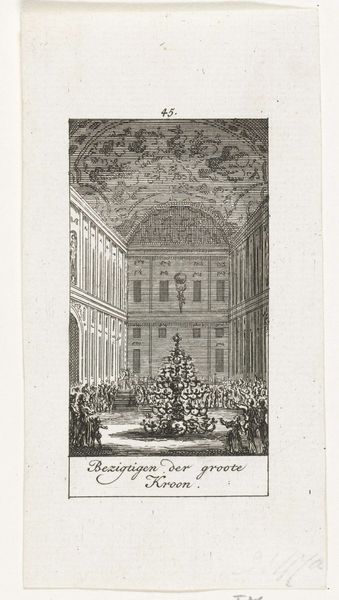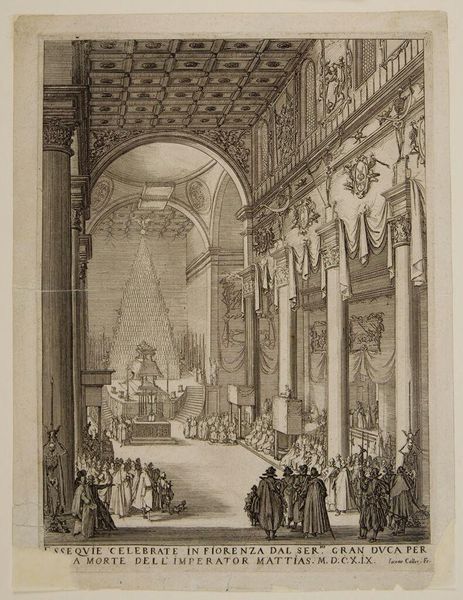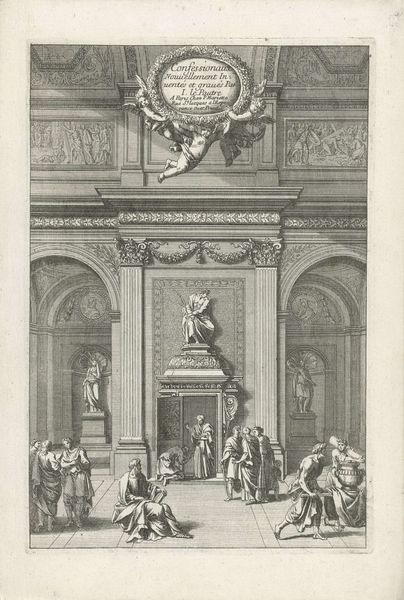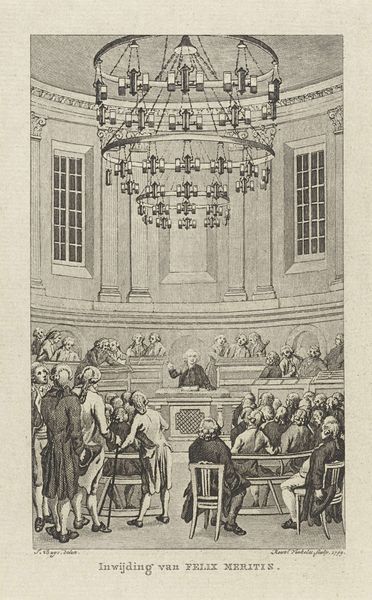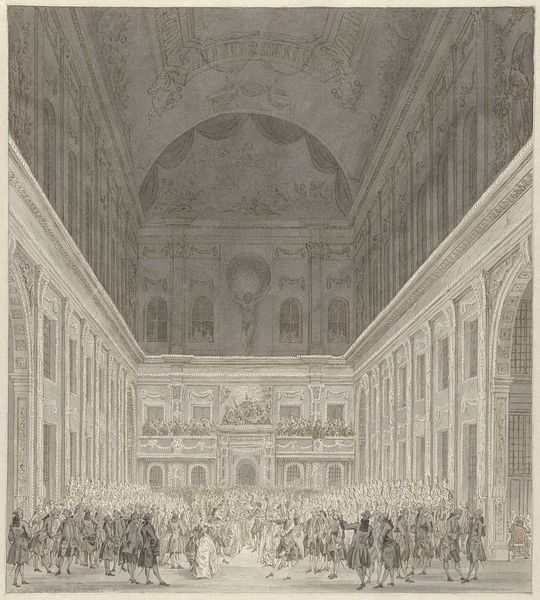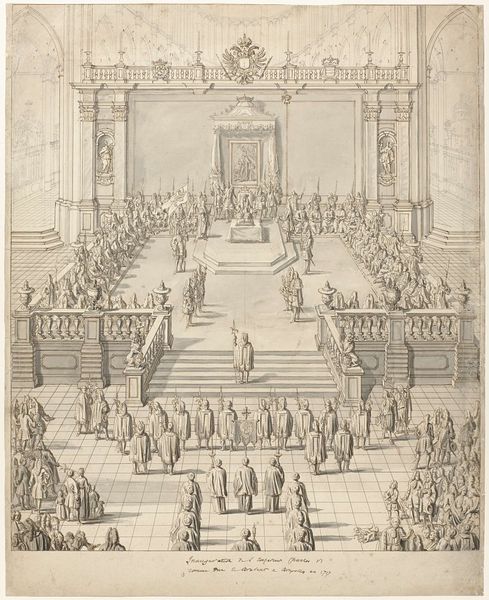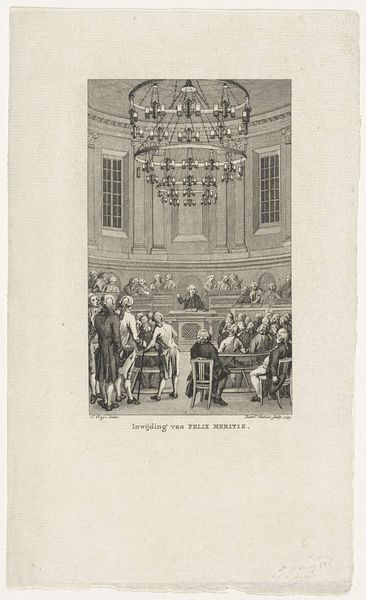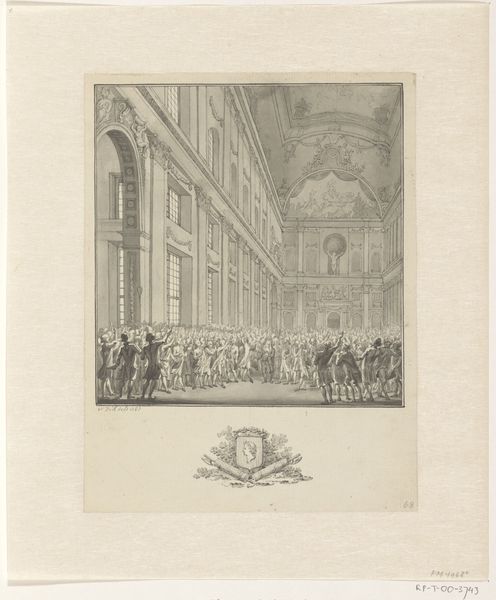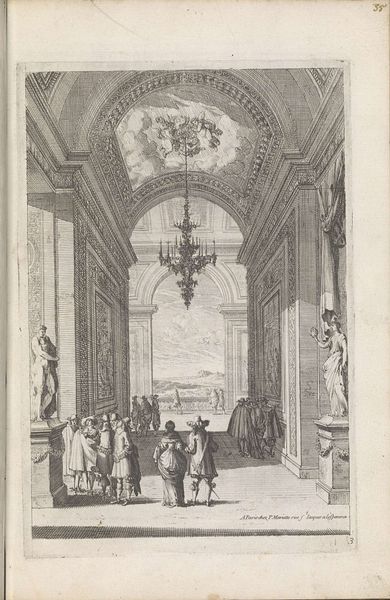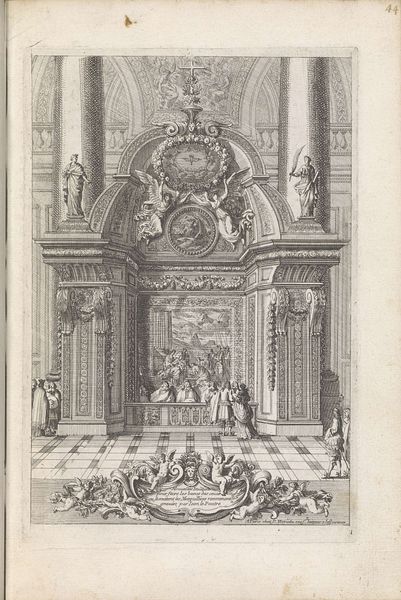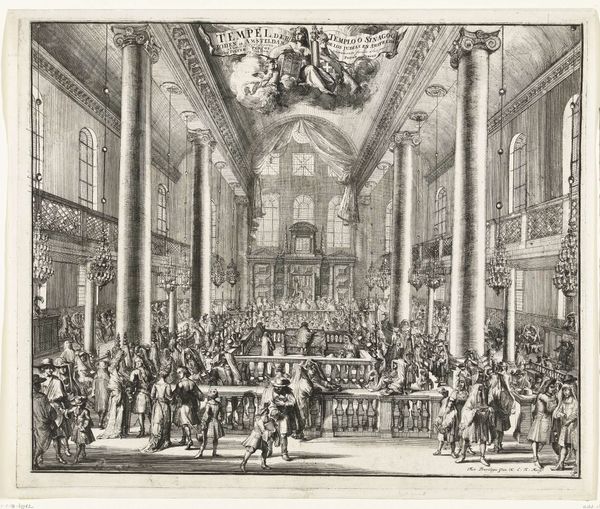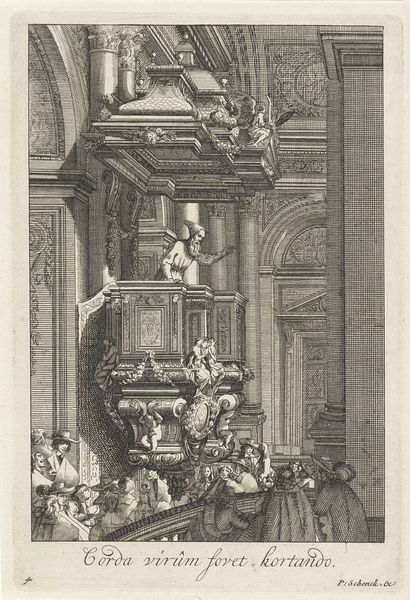
Bezichtiging van de grote kroonluchter, geschenk aan de Russische tsaar, 1659 1779 - 1781
0:00
0:00
Dimensions: height 79 mm, width 42 mm
Copyright: Rijks Museum: Open Domain
Curator: Simon Fokke's engraving, "Bezichtiging van de grote kroonluchter, geschenk aan de Russische tsaar, 1659," created between 1779 and 1781, depicts an event frozen in time. Editor: My initial reaction is a feeling of being overwhelmed. The detail is intricate, yet there is a distinct lack of clear focus that creates a sense of chaos, even in the observation of a gift. Curator: Indeed. The print's meticulous linework crafts a grand hall dominated by the titular chandelier. Fokke’s employment of line modulates light and shadow and draws the viewer’s eye towards its core features. Note, especially, how the formal qualities produce an illusion of depth and grandeur within the restricted space of the print. Editor: However, beyond its meticulousness, this artwork screams of power dynamics. The large chandelier represents opulence and imperial strength while a mass of onlookers seems rather distanced from this display of wealth. Is this a narrative about accessibility or the lack thereof, considering the Russian Empire's history of inequality? Curator: Perhaps. But also think of the artistry embedded in depicting the interior architecture: notice how Fokke renders linear perspective to amplify the grandeur of the space, transforming what might seem chaotic into balanced and harmonious proportions. Semiotically speaking, one must analyze its use of space to understand that, while being about disparity, the artist had a different intent. Editor: It is also crucial to explore this image in relation to its intended audience. The circulation of this print in late 18th-century Netherlands hints at potential commentaries on European courts and their relationship to Russia. Was this made as critique? Is it simple admiration or is Fokke perhaps highlighting anxieties surrounding autocratic power? Curator: Interesting questions indeed! Although I would suggest we also attend to the details as formal tools, which can bring just as much value to the way one may comprehend the essence and message behind the piece. Editor: Indeed, approaching historical artworks necessitates understanding both visual techniques and cultural contexts. Thank you for sharing the view! Curator: A stimulating dialogue on perspective! It has been my pleasure.
Comments
No comments
Be the first to comment and join the conversation on the ultimate creative platform.
